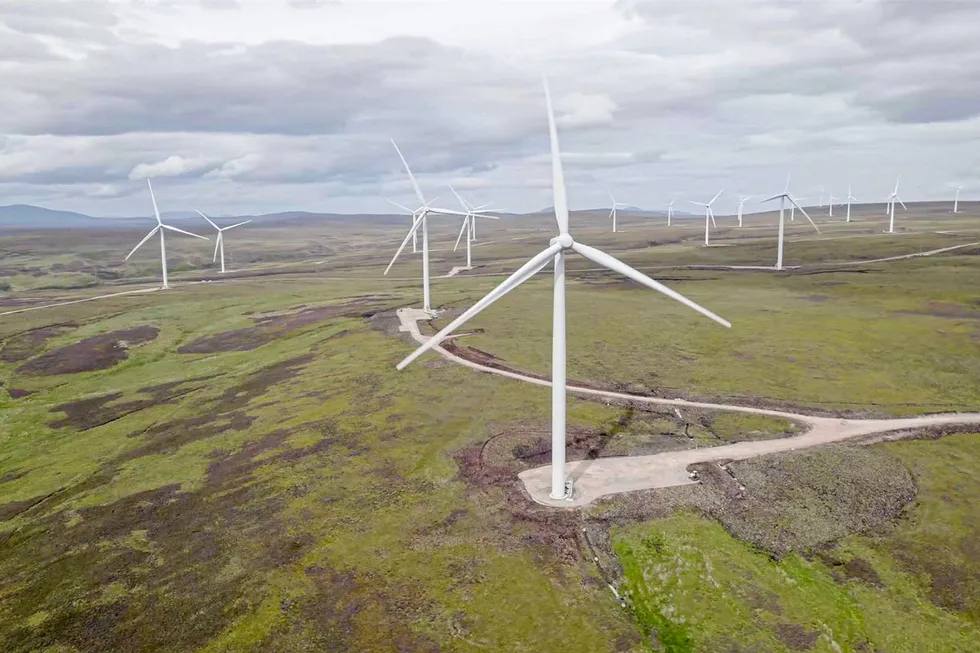Scottish utility SSE has applied for planning permission to produce green hydrogen at one of its wind farms in Scotland, in what would be one of the first instances of existing renewables facilities being used to commercially produce renewable H2.
The 109.75MW Gordonbush wind farm, in the northeast Highlands, currently sends its green power to the local grid. But under
plans filed with the Highland Council, SSE aims to install an electrolyser system on site “that could produce approximately 1,600 tonnes of hydrogen per annum”.
According to Hydrogen Insight calculations — based on an average capacity factor of 26.8% for Scottish onshore wind projects (according to UK government figures) and an electrolyser requiring 50kWh per kilogram of H2 — producing that amount of green hydrogen would require 34MW of the wind farm’s output.
Hydrogen Insight approached SSE for more information on the plans, including how the H2 would be used, but the Perth-based company declined to comment, stating: “The proposed hydrogen project at our Gordonbush Wind Farm near Brora [a town in northeast Scotland] is in the initial stages of the planning process, we will therefore be able to share appropriate information as the project develops.”
SSE had announced plans to produce green hydrogen at the site in April, in conjunction with Siemens Gamesa, saying at the time that the project would produce up to 2,000 tonnes a year. Its April statement added that lithium-ion batteries would be used to store green energy at times of excess wind on the local electricity grid, which could be later used to power the electrolyser.
However, there is no mention of battery storage in the planning documents submitted to the Highland Council.
Additionality
Many organisations and governments are keen to prevent existing renewable energy supplies from being used to produce H2, as green power is needed to decarbonise electricity, and using electrons directly is a more efficient way of using them.
This has led to the concept of “additionality”, whereby only hydrogen produced from new — ie, additional — renewables capacity can be defined as “green”. The European Commission wants to enforce an additionality rule on the EU’s green hydrogen production, and is supported by trade bodies Hydrogen Europe and the Renewable Hydrogen Coalition.
If the UK were still in the EU, any hydrogen produced at the Gordonbush wind farm would probably not be allowed to be called “green” because it would be “cannibalising” some of the existing green electricity supply.
The European Commission's initial plans to enforce the additionality rule on an hour-by-hour basis were rejected by the European Parliament for being too stringent, with talks now under way to formulate a new rule based on developers providing proof that they have only used additional renewable electricity on a month-by-month basis.
(Copyright)